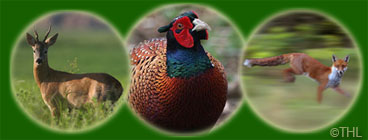Fox Snaring

SETTING FOX SNARES
Ensure that only foxes are using the site where fox snares are to be set.
The presence of foxes will be indicated by:
1. Fox tracks (footprints)
2. Long reddish brown hairs caught on bramble, twigs or wire.
3. Strong musty smell.
• If in doubt do not set a snare !
To snare foxes humanely, adhere to the following rules.
1. Only free running snares which contain a 'permanent stop', 9" (23cm) from the eye of the snare should be used.
2. Use good quality snares which incorporate a strong swivel. The wire must not be less that 460lbs (208 kilos) breaking strain.
3. Snares should be supported by a suitable 'tealer' or set-stick and set firmly in the ground. Tealers made from fence-wire are easy to conceal, set and make.
4. Snares must be firmly anchored.
5. Ensure that snares run freely and are free of 'kinks'. Snares which are frayed or damaged should be discarded.
6. Snares should be set so that the bottom of the loop is at least 9" (23cm) off the ground under normal conditions and up to a height of 12" (30cm) or more, on open ground. When setting snares at these heights the loop should be 6" to 7" (15/18cm)
at its deepest point.
7. The law requires that snares should be checked at least once a day. Inspection at least twice a day and as soon after dawn as is practical is recommended.
8. Foxes should be dispatched quickly and humanely by a shot from a rifle, shotgun or pistol and the body disposed of responsibly e.g. by burying.
9. The displaying of carcases serves no useful purpose and can offend other countryside users
Fox Snaring Provides Efficient Vermin Control

